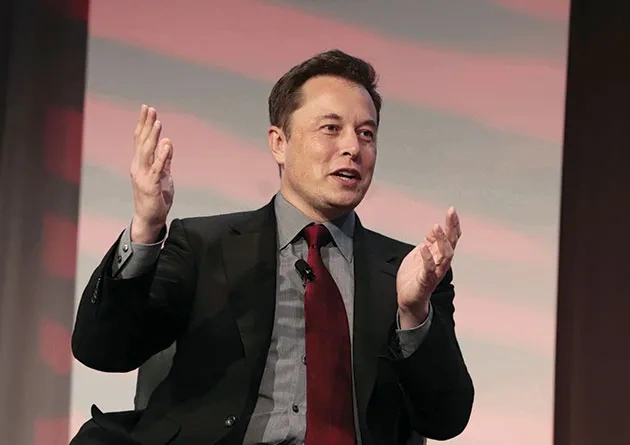In the Loop
A crackerjack team of UT students is competing to change the way we travel.

Imagine commuting from Los Angeles to San Francisco and back in one night after attending a performance of Carmen at the San Francisco Opera House. Impossible—unless you can afford to charter a helicopter. If you’re like the rest of us, you’ll spend eight hours fighting traffic up the California coast, have to splurge on a hotel, and then reverse your course down south the next day, sitting in gridlock all over again.
But what if plans were already underway to travel at speeds exceeding 700 miles per hour on an affordable, comfortable mass-transit system that would make your night at the opera a 60-minute round-trip? A group of UT students across multiple disciplines is competing to create the pods that will do just that.
In 2013, SpaceX CEO Elon Musk released a white paper outlining his vision for the future of transportation: the hyperloop. Since teleportation doesn’t exist—though Musk implores readers to invent that mode of travel on their own—the hyperloop would be the next best thing, an alternative to California’s proposed “high-speed” rail, an expensive and, according to Musk, slow option. The white paper outlines Musk’s idea to transport an average of 840 passengers per hour on a system that is safer, faster, cheaper, self-sustainable, and more convenient than any other form of travel currently available. Shortly after publishing the paper, Musk announced a worldwide pod-design competition for engineers and college students.

While Musk’s vision of a trans-sonic super highway, with hubs in every major American city shooting vacuum-elevated pods in every direction, reads like something out of a William Gibson novel, one of the founders of UT’s student team insists that the hyperloop isn’t that far off.
“It’s an old idea,” Vik Parthiban says. “Theoretically and practically, this makes sense, and this is going to happen very soon. Personally, I believe we can do it in 10 years.”
Parthiban, BA, BS ’14, a graduate student in the Cockrell School of Engineering and an ardent fan of Musk’s, came across the hyperloop white paper two years ago and discussed it with some similarly inclined friends. Parthiban started recruiting fellow students—from physicists to business majors to electrical engineers—and took on the role of electronics lead of the UT team, cheekily called Texas Guadaloop. After acing the first round, the team is set to present their ideas to SpaceX officials at a design conference in early January at Texas A&M. If their design is accepted, they will build a model pod that will be tested next summer on a one-mile track outside SpaceX’s headquarters in Hawthorne, California.
Deborah Navarro, BSA ’15, a Guadaloop project manager and current McCombs grad student, cannot reveal what the pod will look like, partially because it is still being designed using CAD software, but also because the information is proprietary—“top secret,” in her words. She does, however, reveal that it is cylindrical in shape and that many of the parts will be 3-D-printed using resources available to them at the Cockrell School. Navarro also divulges one course of inspiration for the pod: biomimicry, or, the emulation of nature to solve human problems.
“Modeling designs after nature works really well,” she says, turning her laptop to reveal a folder of pictures filled with images of slender, green bugs. “I’m looking at the world’s fastest insects, as well as old sci-fi films like Metropolis and Blade Runner.” Texas Guadaloop will build a four-foot-tall model once all the aspects of the pod are finalized—aerodynamics, electronics, cost, braking, aesthetics, comfort—and, should the team advance, test it on the SpaceX track next year. The idea is that the technology is scalable, and if the model pod works in 2016, production will start soon after on the real deal.
The hyperloop, should the technology ever be adopted, will do more than just make our lives more convenient, Navarro says. It could completely change the notion of living near your place of employment.
“You could commute to work and live affordably,” Navarro says. “There are great implications for growth in cities and smaller areas.”
The UT team has a long way to go, even if their design comes out perfectly and they advance to the next round. They’ll need approximately $20,000 to build that physical model, and at some point they’ll need a large-scale compressor of a jet engine, which can cost as much as $100,000. They are addressing these issues through crowdfunding and private investors.
“You have to be a little crazy to create something like this. We’re a group of mad scientists,” Navarro says. “A lot of times you need that to really innovate.”
Even if Texas doesn’t win the competition or have its technology bought by SpaceX, its hard work over the last year won’t have been for naught. They’ve networked with outside technology firms to make lasting connections, learned to take initiative and innovate, and, perhaps most importantly, found an application for their skills outside the classroom.
“I’ve done all these projects in school,” Parthiban says, “but most didn’t apply to real-world concepts. I feel like I’m a real engineer as a student. That’s what makes it so exciting.”
Photos from top:
Illustration by Noah MacMillan.
Musk speaks at the Automotive News World Congress on Jan. 13, 2014. Photo by Jeff Kowalsky.






